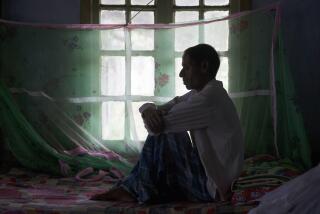Tracking TB’s Ups and Downs
- Share via
Tuberculosis is an infection of the lung, but sometimes other organs and tissues are also affected. The “consumption” of bygone days--caused by the bacterium Mycobactrium tuberculosis--had been decreasing in the U.S. until the early 1980s. But in the mid-’80s, the number of cases started rising and continued to do so until 1992.
Here are some numbers:
* 1989: Number of cases increased to 23,495, or 4.7%, the largest increase since national reporting of TB began in 1953.
* 1990: Increase was 9.4%, or a jump to 25,701 reported cases.
* 1991 and 1992: Increases to 26,283 and 26,673, respectively, were reported.
* 1993: Decrease in number of cases began, to 25,313.
* 1994: 24,361 cases reported.
* 1995: 22,860 cases reported.
* 1996: 21,337 cases reported.
* 1997: 19,855 cases reported.
* In 1997, six states--California, Florida, Illinois, New Jersey, New York and Texas--reported 57% of all TB cases.
* In 1997, the TB rate for the U.S. as a whole was 7.4 cases per 100,000 population. The nation’s highest rate that year was 20.8 in the District of Columbia; the lowest, 0.4, was in Wyoming. California recorded a rate of 12.6.
Source: Lung Disease Data, 1998-99, American Lung Assn.






